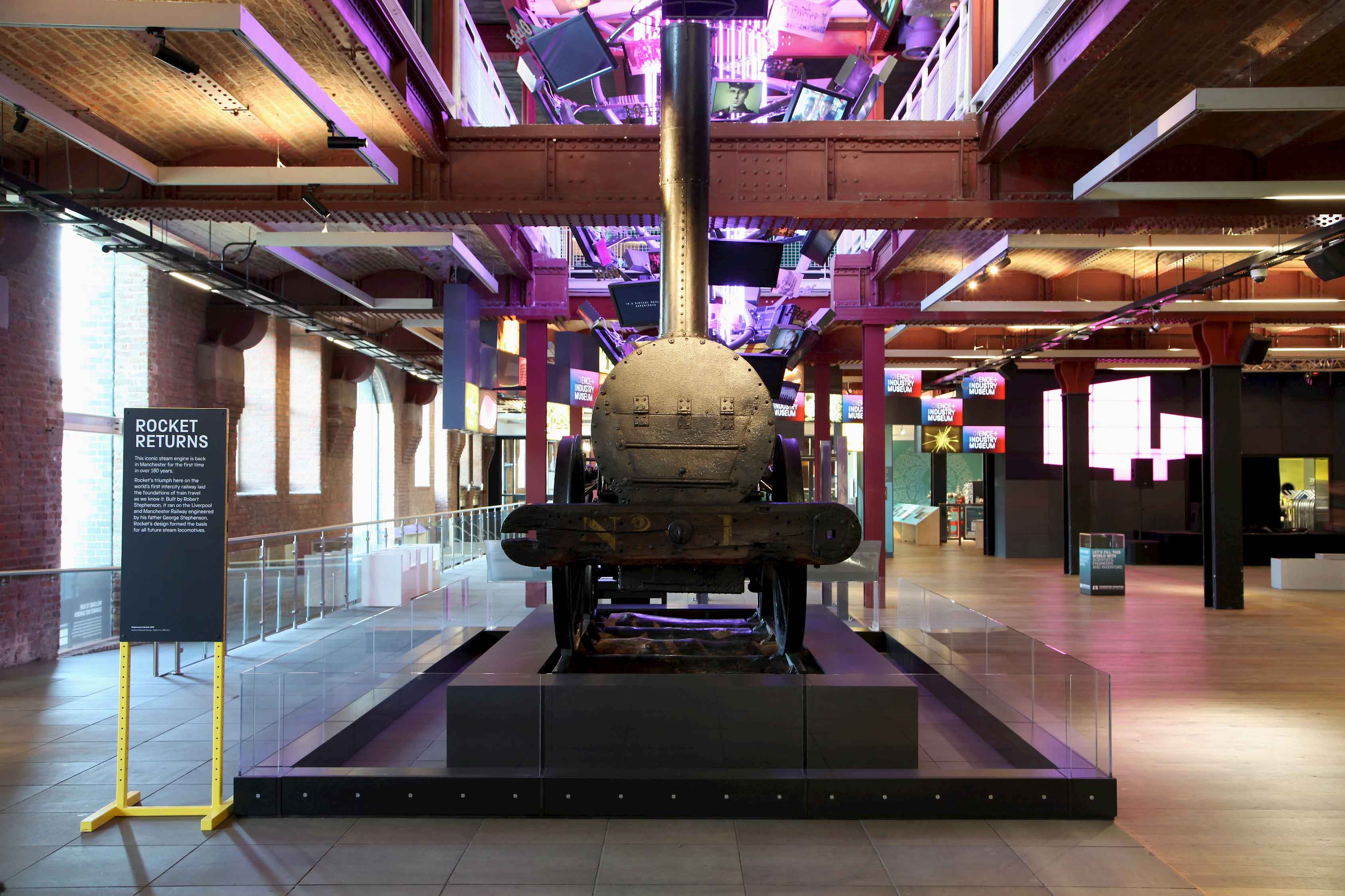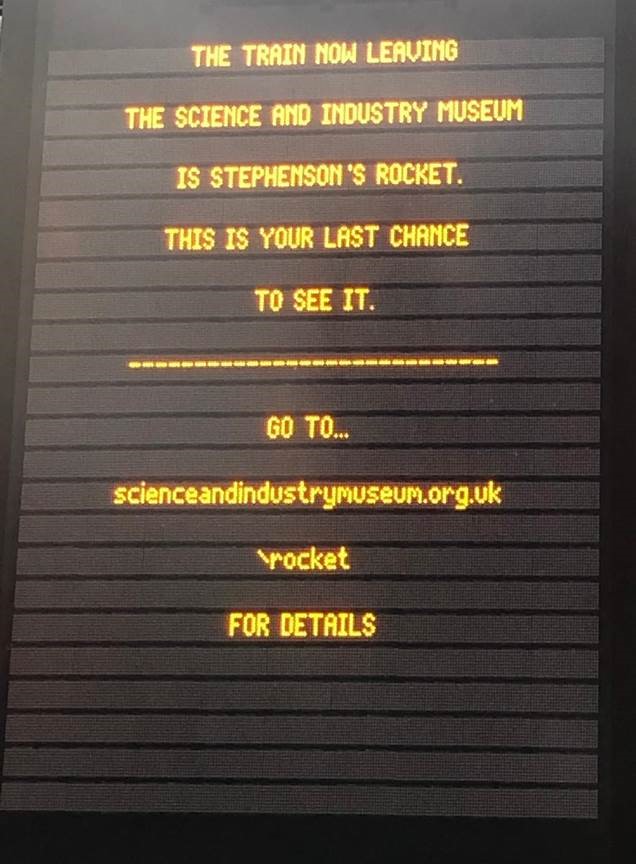
Rocket has made quite an impact with its 11-month visit. It’s been seen by over 500,000 visitors, many of whom have been really excited to see such a legendary name in both railway and British history.
Me and @doktorb visited @sim_manchester yesterday with the sole purpose of seeing the one that started it all.
Stephenson’s Rocket! pic.twitter.com/gn7lav9wwj
— Richard Orr (@RickyOrr) January 29, 2019
First time visiting @sim_manchester. As a railwayman used to travelling at 300 kmh, it was very fitting to see where it all began with the world’s first inter-city railway. 20 mph back in 1830. A real treat to see Rocket back home. #history #travel #Manchester pic.twitter.com/bNe3jCGLxN
— Justin on eurostar (@EurostarJustinp) April 13, 2019
Admidst the new boom & thrust of this city, apt and strangely moving to see The Rocket. The wonderful Science and Industry Museum – @sim_manchester – borders the building site of “Factory” where built lift shafts and loading docks are already in evidence today. @MIFestival pic.twitter.com/Rc7pxLSQdi
— Deborah Warner (@deborahwarner59) May 24, 2019
We had a whole heap of events celebrating this VIE (Very Important Engine) during its stay, our Explainer team delivered 1,320 Rocket talks that brought the story of the Rainhill Trials to life, and kids from Abraham Moss Primary School asked our expert, Erin Beeston, all the important questions for their Ready, Steady, Rocket weekend takeover:
A few weeks ago, it was even chosen as the backdrop for a speech by Prime Minister Boris Johnson.

Rocket’s history and its part in the development of the early railways has inspired plenty of blog posts too. Michael Bailey, a historian and the author of several books on Rocket, detailed its engineering excellence. Dr Shirin Hirsch, a historian based jointly at the People’s History Museum and Manchester Metropolitan University, wrote about the opening day of the Liverpool and Manchester Railway, putting both the fatal accident involving Rocket and the near riots in Manchester into the political context of the time.
We wrote a two-part biography of the Stephensons—George, who engineered the Liverpool and Manchester Railway, and his son, Robert, who designed and built Rocket—plus another on actress Fanny Kemble, one of the first celebrities to ride the new form of transport. We even looked at how and why Rocket and the other Rainhill Trials participants got their names, and invited Dr. Alex Jackson, the Collections Officer at the National Football Museum, to tell us how the rise of the railways helped football fans cheer on their teams. There were also light-hearted looks at Rocket through its inclusion in our run-down of objects for Halloween and a visitor-sourced playlist.
If all that wasn’t enough, Piccadilly Station have got ‘all aboard’ this week with a last chance message on their announcement boards:

As one of the first objects acquired by the Science Museum (back in 1862 when it was still the Patent Office Museum), Rocket’s significance has been recognised for over 150 years. It has also entered the public’s imagination as a prime example of 19th century engineering.
It is hard to overstate just how much Rocket changed the world for people living at the time. Before early locomotives like Rocket, no one had travelled faster than on horseback, yet now we fly around the world and travel into space. Before the railways, time wasn’t standardised across countries and each town or city had its own, but that had to change because of the speed at which these new machines could get people around.
Before the Liverpool and Manchester Railway, travelling by train was a novelty, a daring, thrilling adventure, yet now it is a part of everyday life across the globe. Rocket is one of the last surviving objects of that time. It is a connection with both the Industrial Revolution and a symbol of its legacy today.
Here I am in the states, about to reveal my English roots: my great grandfather Edward Robinson was the first conductor on the Liverpool- Manchester line. His grave stone has a depiction of the Rocket.
Thanks for your informative site. Now I must visit.
The Rocket here has a much lowere rake angle than is generally depicted, was this chenged during it’s working life, and if so why?